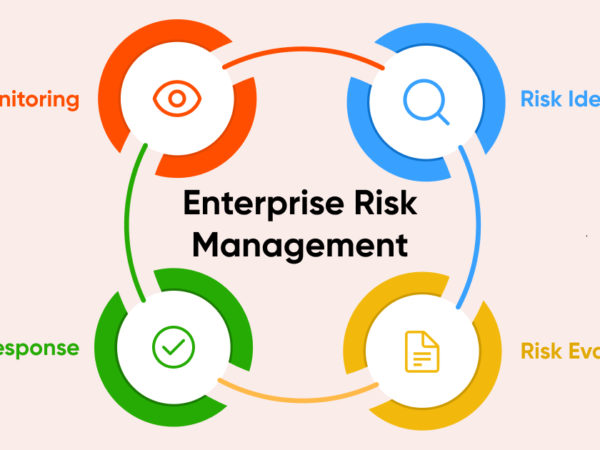OS Command Injection is a serious security threat.
Injection attacks occur when an attacker is able to inject some malicious code into an application or system in a way that allows them to execute unauthorized actions.
Some examples of injection attacks include SQL Injection, cross-site scripting, Command injection, and LDAP & XPath Injection.
The consequences of a successful injection attack can be severe, including unauthorized access to sensitive data, system compromise, and the ability to execute further attacks on the system or network.
This article will discuss the command injection attack and methods to prevent it.
Let’s get started!
What is OS command injection?
OS command injection, also known as shell injection, is a type of security vulnerability that occurs when an attacker is able to inject arbitrary commands into a system through a vulnerable application.
The attacker can execute these commands on the underlying operating system with the same privileges as the application, which can lead to a wide range of malicious activities such as data theft, arbitrary code execution, and system compromise.
How does it work?
OS command injection works by exploiting a vulnerability in the way a system processes user input. In most cases, the vulnerability arises from a lack of proper validation, sanitization, or escaping of user input before it is passed to a system shell for execution.
Here’s how it typically works:
- First, The attacker identifies a target system that is vulnerable to command injection. This can be a web application, a standalone program, or any other system that allows the execution of shell commands based on user input.
- The attacker crafts a malicious payload that contains shell commands that they want to execute on the target system. This payload is usually designed to bypass any input validation that the target system may have in place.
- Then the attacker sends the malicious payload to the target system either through a form field, a URL parameter, or some other input mechanism.
- The target system takes the user input and passes it to a shell for execution.
- Suppose the system does not properly validate or sanitize the input. In that case, those shell commands are executed on the target system, and the attacker can access sensitive information, modify & delete files, or gain unauthorized access to the target system.
Example of command injection
Imagine a web application that takes a user-supplied hostname or IP address and pings it to check its availability. The application is vulnerable to command injection if it fails to properly validate and sanitize the user input.
An attacker can take advantage of this vulnerability by entering the payload.
127.0.0.1 ; cat /etc/passwdWhen the web application runs the ping command with this payload, it will actually execute two commands.
The first command, “ping 127.0.0.1” will be executed as expected and return the results of the ping command.
However, the semicolon (;) followed by “cat /etc/passwd” allows the attacker to inject an additional command that will read the contents of the /etc/passwd file, which contains sensitive information about the system’s users and their passwords.
That is why command injection is considered a serious security threat.
Impact of command injection vulnerability
Command injection is a serious security vulnerability that can have severe consequences for both the system and its users. Some of them are:
Data theft
Attackers can steal sensitive information such as passwords and confidential data by executing commands that read and exfiltrate sensitive files.
Arbitrary code execution
Attackers can execute arbitrary code on the vulnerable system, which allows them to take full control of the system and perform malicious activities such as installing malware or creating new user accounts.
System compromise
An OS command injection attack can compromise the entire system, making it vulnerable to further attacks or rendering it inoperable.
Reputation damage
It can also negatively impact the reputation of the affected organization or website.
It’s important to take appropriate measures to prevent injection attacks by properly validating user input and using secure coding practices.
How to detect OS command injection vulnerability?
There are several ways to detect OS command injection vulnerabilities, including:
Code review
Reviewing the source code of the application can help identify instances where user input is used directly in OS commands. This is often an indication of a potential vulnerability.
Penetration testing
Penetration testing involves simulating an attacker’s actions to identify vulnerabilities in the application. This can include attempting to inject malicious commands into the application to see if it is vulnerable to a command injection attack or not.
Scanning tools
There are several security scanning tools that are specifically designed to identify vulnerabilities in applications, including command injection vulnerabilities. These tools work by automatically testing the application for potential exploits.
Log analysis
Monitoring the application’s logs can help identify instances where attackers may have attempted to inject commands into the application. This can help to identify any potential vulnerabilities that need to be addressed.
It’s important to note that simply detecting a vulnerability is not enough. In order to protect the application and its users, you should immediately prioritize and address the vulnerabilities that have been found.
How to prevent OS command injection attacks?
OS command injection attacks can be prevented by following these best practices:
Input validation and sanitization
Validate whole user input to ensure that it does not contain malicious payloads.
This can be done by using a whitelist of allowed characters, checking the length of user input, and encoding or escaping special characters in user input before passing it to the shell.
Use parameterized commands
Instead of constructing shell commands from unsanitized user input, use parameterized commands that pass user input as parameters rather than as part of the command string. This reduces the risk of command injection attacks.
Avoid executing shell commands with high privileges
The possibility of a successful command injection attack is increased when shell commands are executed with root access or higher. Shell commands should only have the rights necessary to carry out their intended function.
Implement error and exception handling
Implement error and exception handling to detect and avoid injection attacks by identifying and logging unusual behavior like unexpected output or failures.
Conduct regular security testing
Regular security audits and testing can identify vulnerabilities in your code and systems.
Conclusion
Preventing command injection attacks requires a combination of secure coding practices and defensive programming techniques. This includes input validation, parameterized queries, output encoding, and the use of least privilege principles.
Additionally, continuous monitoring and vulnerability testing can also help to identify and address potential injection vulnerabilities before they can be exploited by attackers.
I hope you found this article helpful in learning about command injection vulnerability and how to prevent it. You may also be interested in learning about the vulnerable web applications to practice hacking legally.



